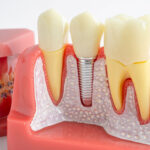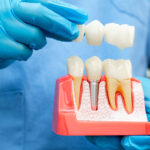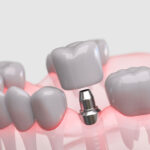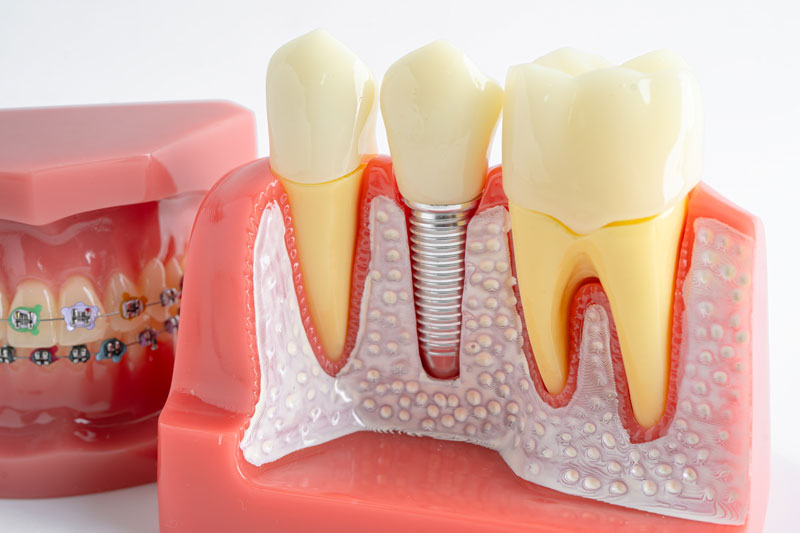A front tooth implant is a dental procedure designed to replace a missing front tooth with a permanent, natural-looking solution. This implant consists of a titanium screw that anchors into the jawbone, serving as the root of the artificial tooth. Unlike dentures or bridges, which can slip or require adjacent tooth alteration, front tooth implants offer a stable and long-lasting solution. The front tooth is critical for both aesthetics and function, impacting your smile and bite alignment. An implant for front tooth issues can be necessary when a tooth is lost due to trauma, decay, or congenital reasons. Understanding these fundamentals helps patients make informed decisions about their dental health.
The significance of distinguishing a front tooth implant from other dental implants lies in the visibility and functionality of front teeth. Since front teeth are prominently visible when talking or smiling, achieving a natural appearance is paramount. Unlike molars that prioritize chewing ability, the focus for front implants is equal parts cosmetic and structural integrity. A front tooth implant must seamlessly blend with adjacent teeth in color, shape, and size, a challenge that professionals are well-equipped to meet with advanced dental technology. By comprehensively understanding the unique nature of front tooth implants, patients can feel more confident in their choices and the transformative impact of the procedure.
Unveiling the Comprehensive Implant Process
Embarking on the journey to a front tooth implant begins with a detailed consultation with a qualified dental professional. During this initial meeting, diagnostic imaging, and discussions about your medical history aid in creating a personalized treatment plan. After the planning phase, the surgical placement of the implant is the next step, where precision is crucial for optimal integration with the jawbone. This surgical procedure, often performed under local anesthesia, ensures minimal discomfort for the patient. After surgery, a healing period allows the implant to integrate with bone, a process known as osseointegration, which is vital for long-term success. This thorough planning and execution ensure the durability and function of the dental implant.
Following osseointegration, which can take several months, the final restoration phase begins with attaching an abutment to the implant. This piece acts as the connector to the dental crown, which is custom-made to perfectly match the surrounding natural teeth in both color and form. This customization process often includes a series of fittings and adjustments, ensuring that the outcome feels and looks spectacularly natural. By understanding each step of the comprehensive implant procedure, patients can better prepare themselves for the timeline and expectations. The entire process emphasizes precision and expertise to deliver a restoration that feels indistinguishable from the original tooth.
Advantages and Considerations for Choosing a Front Tooth Implant
One of the most compelling benefits of opting for a front tooth implant is its likeness to a natural tooth, providing unmatched aesthetics and function. Implants preserve bone density by preventing further bone loss which often occurs when a tooth is missing, maintaining the facial structure, and avoiding a sunken appearance. In terms of care, implants are easier to maintain as they do not rely on neighboring teeth for support, unlike dental bridges. However, potential candidates should also weigh certain considerations, such as the time commitment required for the entire process and the necessity of sufficient bone density in the jaw for successful implantation. The benefits, though substantial, should be carefully evaluated alongside personal health and lifestyle factors.
Key factors influencing the success rate of a front tooth implant include maintaining excellent oral hygiene and attending regular dental check-ups. These measures help to prevent infection and ensure the longevity of the implant. Patients should also be aware of lifestyle habits such as smoking, which can negatively impact healing. Additionally, understanding the financial investment is crucial since implants may have a higher initial cost than other dental solutions, but they are also more durable and require less upkeep in the long run. By carefully considering these advantages and challenges, patients can make well-informed decisions about pursuing a dental implant for their front tooth, ultimately leading to a healthier, more confident smile.
Ensuring Longevity Through Effective Aftercare
The longevity of a front tooth implant can also be reinforced through lifestyle considerations, such as a balanced diet rich in vitamins and minerals to support oral health. Avoiding hard or sticky foods can prevent undue stress on the implant. Furthermore, timely intervention at the first sign of any complications, such as inflammation or discomfort, can prevent potential implant failures. By adhering to a comprehensive aftercare routine, the long-term success and aesthetic appeal of the implant are significantly enhanced. This vigilance ensures your smile remains vibrant and healthy, symbolizing a successful dental restoration journey.
Here at Boston Implant Center, we take pride in crafting personalized treatment plans that cater to each patient’s unique needs and preferences. Are you ready to restore your smile at our skilled and trusted dental practice? Don’t wait to get the smile of your dreams with us. Get in contact with our doctor, Dr. Chan W. Cheong, and our exceptional team at our practice to schedule an appointment today!






